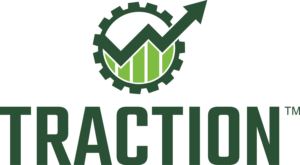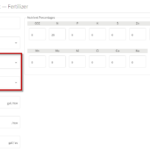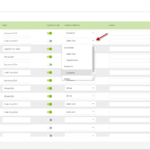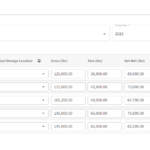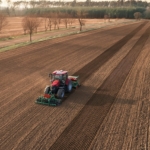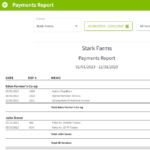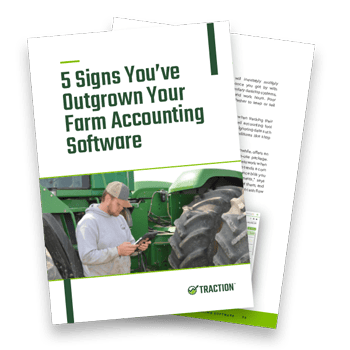Home | Prepping Farm Financials for the Harvest Season
Prepping Farm Financials for the Harvest Season
Maximizing Profit Margins in 2024
As we near the end of summer, the focus for grain farmers shifts to harvest preparation. Combines, trucks, storage facilities and other resources need to be prepped and ready to go for the marathon that is our harvest season. There are elements of a farm’s financial processes that also need to be prepped in parallel.
A STRATEGIC APPROACH
- Preliminary Cropping Plan
Once the cropping plan is in place, the next financial task is to make sure the farm has a viable way of tracking those costs for next year’s crop. This means recording the cost of fertilizer, herbicides, manure, or cover crops applied to each field, but also recording the machinery and labor costs of those and any other operations preparing fields for the 2024 crop. For year-end financial statements, the farm should generate an accrual balance sheet, showing the costs incurred in the fall for next year’s crop. These costs are an important asset and will likely have a significant effect on the reported accrual income for the business. - Efficient Cost Tracking
Because next year’s growing season begins immediately post-harvest, it is important to make preliminary cropping plans and rotation decisions. Since part of that decision involves knowing the relative profit margins of different crops, take the time to budget costs and returns for each potential 2024 crop. This means projecting input quantities and costs, along with expected crop yields and prices, and calculating a contribution margin for each crop. (By contribution margin, we mean expected revenue minus all costs directly attributable to field activity for a particular crop. This would not include land cost or overhead.) - Analyzing Profitability
Another reason to carefully track costs is that it will allow the farm to analyze profitability at the field and crop level. Referring to the points above, contribution margin budgets are simply a projection for next year formatted similarly to the reporting of previous years’ actual results. Nothing improves budgeting accuracy and relevance more than having a great history of actual results.


Conclusion
The act of budgeting, recording accurate results, comparing the two, and then refining the process over time is the best way to insure sound decisions and strong financial performance for the farm business. Using farm management software can get you to the finish line much quicker than doing all of this on paper or spreadsheets. Prepping your finances now will position your farm for greater success in 2024.
-

Brian Watkins
Brian Watkins farms with his brother and nephew near Kenton, Ohio. They specialize in corn and soybean production and operate a wean-to-finish swine operation. Brian holds a BS in Ag Econ and an MBA from The Ohio State University. In addition to farming, Brian speaks and consults on the topic of farm technology adoption and value creation. He has consulted internationally on farm management with the World Bank. He is also a founder of CropZilla Software, Inc., a finance and management tool for farmers.
cropping plan efficient cost tracking farm financial planning farm management software farm profitability analysis grain farming strategies

